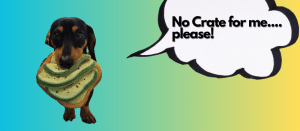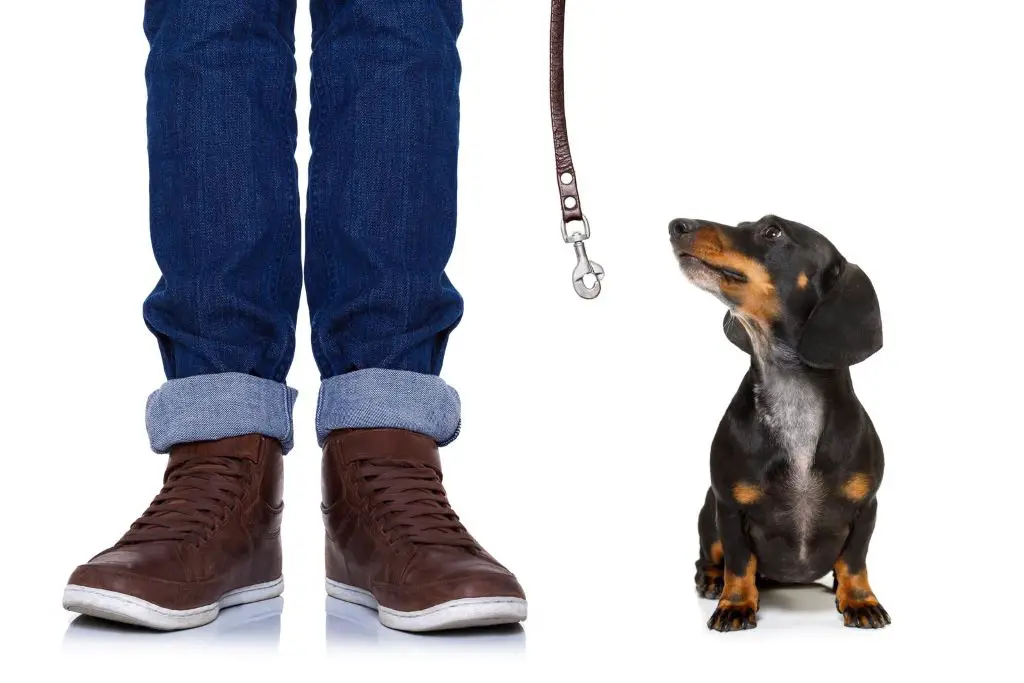Did you know the majority of pet parents notice their dogs crying or showing signs of distress while playing with squeaky toys?
It’s a common yet often overlooked issue. If you’ve ever wondered why your canine companion seems upset when engaging with their favorite squeaky toy, you’re not alone.
There are various reasons that may contribute to this behavior, from natural predatory instincts to sensitivity to high-pitched sounds. It might also be an indication of toy-related anxieties.
But don’t worry, finding a solution that keeps your furry friend happy and content while they play is not only possible but also essential for their overall well-being.
This article will help you understand what causes this distress, how to deal with it, and how to choose the right toys for your beloved pet, ensuring a safe and enjoyable playtime.
Key Takeaways
- Dogs may cry or show distress while playing with squeaky toys, but this is often a normal canine reaction to communicate excitement.
- Understanding the reason for the whining or crying is crucial for creating a safe and comfortable play environment.
- Factors causing distress can include noise, environmental changes, or health and emotional issues, so it’s important to assess and address these factors.
- Choosing the right toys, supervising playtime, and regularly inspecting toys for wear and tear are essential for ensuring safe and enjoyable play experiences for dogs.
Understanding Squeaky Toys
You’ve probably noticed how much your pooch loves their squeaky toy, haven’t you? It’s not just about the physical play; the squeaky toy offers a unique auditory experience that can stimulate your dog in ways other toys simply can’t.
When you’re trying to understand squeaky toys and why they’re so loved by your pet, you need to delve a little bit into canine psychology and instincts.
Squeak toys are, in essence, a simulation of the sounds prey animals make. These toy squeaks can trigger your dog’s innate hunting instincts, causing them to become excited and engaged. This excitement is often expressed vocally, which is why you might hear your dog cry with squeaky toys. It’s their way of communicating their excitement, not a sign of distress or unhappiness.
So, when you toss that squeaky toy and hear your dog start to vocalize, bear in mind that they’re just expressing their joy and engagement. This understanding could open a new avenue for bonding with your pet, by providing them with toys that stimulate their natural instincts, like squeaky toys.
There’s no need to worry – your dog is just having a great time!
Canine Reactions to Toys
Interestingly, most canines exhibit an increased level of excitement when interacting with toys that make noise, which can sometimes be mistaken for distress or crying. You may notice your dog cry at squeaky toys, and this is a normal canine reaction to toys. It’s not that your furry friend is upset, but rather, they’re expressing their enthusiasm and joy.
Playing with toys, especially ones that squeak, stimulates your dog’s senses. It’s a form of entertainment for them, keeping them engaged and mentally stimulated. A squeaky toy for your dog can mimic the sounds of prey, triggering their natural hunting instincts. This could explain why your dog whines while playing. It’s their way of communicating their excitement and eagerness.
However, it’s essential to keep an eye on your dog’s reactions. If the whining seems excessive or if they seem agitated rather than excited, it may be time to consider a different type of toy. Remember, the goal is to bring joy and enrichment to your dog’s life, not stress. Ensure that playtime is always a positive experience for your beloved pet.
Factors Causing Distress

While it’s typically all fun and games, there are times when your furry friend might experience stress or discomfort during playtime. It’s not unusual for your dog to cry at squeaky toys or display signs of anxiety. This reaction can be due to a variety of factors, ranging from the noise the toy makes to issues related to your pet’s health or emotional well-being.
A dog whining at a toy could be a sign of fear or confusion stemming from the squeaking sound. Perhaps, they interpret it as a distress call from a fellow canine. Your dog might also be anxious due to environmental factors. Changes in surroundings, new pets or people, or even a shift in your daily routine can stress your pet out. In female dogs, signs of a false pregnancy, such as nesting or mothering objects like toys, can cause them to whimper or cry.
Understanding the reason for whining or crying is crucial. It’s your responsibility as a pet parent to identify these signs and act accordingly. Provide a safe, comfortable environment for your dog to play and interact, ensuring their well-being at all times.
Dealing with Toy-Related Anxieties
Navigating your furry friend’s toy-related anxieties might seem like a tough nut to crack, but with patience and empathy, it’s achievable.
If your dog cries at squeaky toys, it’s crucial to understand the underlying reasons. These could be linked to the high-pitched noises squeaky toys make, which may remind your pet of prey in distress.
Dealing with toy-related anxieties starts with recognizing your dog’s behavior. Look for signs of distress when your dog is playing with the squeaky toy. Is your dog crying, pacing, or showing signs of agitation? If so, it might be time to reconsider the types of toys you provide.
Try introducing softer, quieter toys and observe your dog’s reaction. If the crying subsides, you may have found a solution. Remember, the goal here is to ensure your pet feels safe and happy while playing.
Keep in mind, it’s not about totally eradicating the squeaky toys from your dog’s life; it’s about finding a balance that suits your pet’s comfort levels. By doing this, you’ll not only alleviate your dog’s crying but also foster a more enjoyable playtime experience.
Choosing the Right Toys
Selecting the perfect playthings for your pet isn’t only about fun; it’s also about their safety and comfort. The right toy can make a huge difference not only in how your dog interacts with it, but also in their overall well-being. When selecting a new toy, consider your pet’s size, age, and chewing habits.
While choosing the right toys, keep in mind the following points:
• Look for toys that are the appropriate size for your dog. A toy that’s too small can be a choking hazard.
• Consider the durability of the toy. Some dogs are strong chewers and may quickly tear apart a toy, potentially ingesting harmful toy parts.
• Choose toys that stimulate your dog mentally. Puzzles and toys that can be filled with treats are great options.
• Avoid toys with small parts that can be easily removed and swallowed.
• Consider your dog’s individual preferences. Some dogs prefer soft and squeaky toys, while others enjoy hard and chewy ones.
Remember, when your dog gets a new toy, supervise them initially while they play with the toy. This will ensure they’re playing safely and not showing signs of distress. So, the key to a happy playtime isn’t simply a toy, but the right toy.
Ensuring Safe Playtime
Sure, you think you’re the life of the party, but did you ever stop to consider that your pooch might be the real star of the show when it comes to playtime? Especially when they’ve got a squeaky toy in their mouth, the joy is palpable. But while it’s heartwarming to see them having fun, ensuring safe playtime is crucial.
The squeaky sound that these toys make can stimulate your dog, making them more excited and active. But you also have to be cautious. Some dogs might get so carried away that they could attempt to swallow the toy, creating a choking hazard. Regularly inspect the toy for any signs of wear and tear, and replace it immediately if it’s damaged.
Moreover, if your female dog is showing signs of false pregnancy, such as nesting or mothering the toy, it might be best to remove the squeaky toy for a while. These behaviors, while natural, can lead to stress and anxiety if not addressed.
Ensuring safe playtime doesn’t mean taking away the fun. It’s about creating a balance between enjoyment and safety, and that’s the secret to a happy, healthy pooch.
Frequently Asked Questions
What other toys might trigger a crying reaction in my dog?
Other toys that might trigger a crying reaction in your dog could be those that make unexpected loud noises, have a texture they dislike, or are too difficult to chew or play with.
Why does my dog get aggressive when playing with certain toys?
Your dog may become aggressive with certain toys due to possessiveness or high excitement levels. It’s important to monitor their behavior and intervene if necessary; teaching them gentle play is more enjoyable and safe.
Can my dog’s breed influence its reaction to squeaky toys?
Just as a Border Collie might herd children, your dog’s breed can indeed affect its reaction to squeaky toys. Some breeds have a high prey drive, making them more reactive to these types of toys.
How often should I replace my dog’s toys to prevent anxiety?
You should consider replacing your dog’s toys every one to two months. Regularly introducing new toys can help prevent boredom and anxiety. Always monitor your pet’s reaction to ensure the new toy is well-received.
Are there specific times of day when playing with squeaky toys might cause more stress for my dog?
Just like Cinderella’s transformation at midnight, your dog may feel stressed with squeaky toys during evening hours. Dogs often associate night with rest, so maintaining quiet play can ensure their peace and comfort.
Conclusion
So, it’s a bit like solving a jigsaw puzzle, isn’t it? You’ve explored the world of squeaky toys and understood why your dog might cry. You’ve also learned how to handle it. Remember, it’s all about finding the right toy that fits perfectly with your pup’s playtime, just like that missing puzzle piece. Ensuring safe, stress-free play is your journey to a happier, healthier dog.












